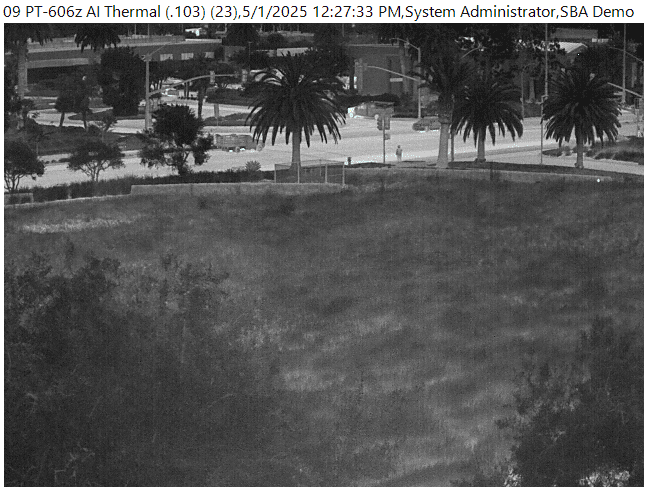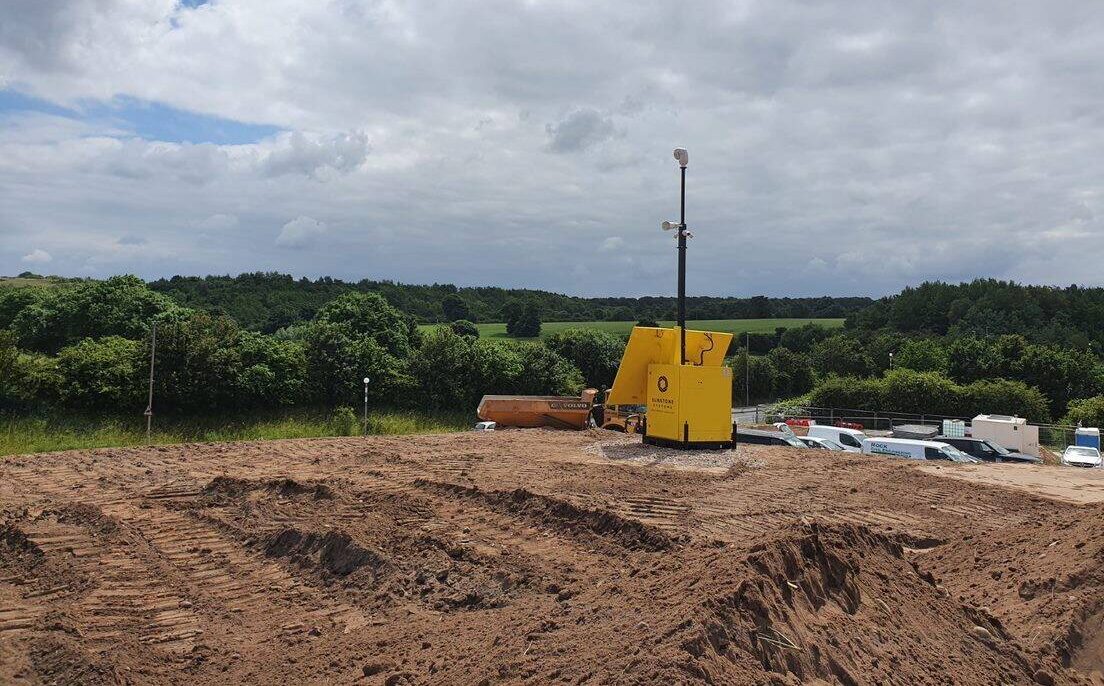 While India’s Defense Ministry has always hogged the limelight in terms of global procurement of weapons and surveillance systems, India’s Homeland Security market will not be lagging behind for long, writes Pathikrit Payne.
While India’s Defense Ministry has always hogged the limelight in terms of global procurement of weapons and surveillance systems, India’s Homeland Security market will not be lagging behind for long, writes Pathikrit Payne.
Modernizing a police force of nearly 2.8 million personnel, inclusive of Central and state police forces, is a daunting challenge by any standard. While India spends around $17-18 billion annually on internal security, it is expected to go up significantly in the coming years as the possibility of sub-conventional or asymmetric warfare rises vis-à-vis the reducing possibility of conventional warfare. Even though India’s defense sector has always hogged the limelight with its whopping acquisition spree, in the coming years, India’s homeland security market would not be far behind in terms of its acquisition of modern weapon systems to make India more secure as much internally as it is externally.
With the contours of global economic theatre gradually moving towards Asia, the importance of peace and tranquility in the Asian arena is more important now than ever before. As per the latest estimates by Standard Chartered published in 2011, by 2030, China’s GDP is expected to be a whopping $73.5 trillion followed by US at $38.2 trillion with India would be occupying the third place with a GDP of $30.3 trillion. Similar reports by Goldman Sachs and PricewaterhouseCoopers also predict more or less the same proposition. The common thread among all such reports is that in the next few decades, two of the world’s top three economies would be from Asia.
Yet on the flip side, what remains a pertinently critical issue is that Asia is far from being a zone of tranquility. Be it civilizational hostilities that exist in West Asia or be it the rivalries between India and Pakistan in South Asia in addition to the rampage and growing prowess of Islamist radical elements, the probability of a conflict always hangs like a dagger on the destiny of Asia and can wreak major havoc on the economic possibilities of the continent. In between West Asia and South Asia only, these two regions together have been witness to more than ten major conflicts and innumerable terror attacks since the end of Second World War.
While globalization has been extremely successful in reducing the possibilities of full-fledged conflicts between nation states due to issues of economic interdependence and shared future, when it comes to non-state actors like terror groups, they do not have any inhibitions or shared responsibilities as such. India might have differences and major points of contention with both China and Pakistan but they would still have channels of backdoor diplomacy to reduce the tensions instead of sorting it out through war. The case though, would not be the same when it comes to non-state actors. Therefore, rhetoric notwithstanding, India faces more grave threats from an LeT than the Pakistani state even though the case of plausible deniability wherein a state uses not state actors to farther its objectives through nefarious means cannot be underestimated. But today, things as they stand, such non-state actors have actually outgrown their mentors and have become more dangerous than the state which groomed it.
For India, geopolitical imperatives compel it to have a substantial military budget of around $40 billion. But simultaneously, a new realization is also precipitating that homeland security can no longer be taken for granted and that in the coming days it would be a very critical element of the overall security of the nation. There are an estimated 178 banned terror and insurgent organizations which are out there to destroy India’s pluralism and paradigm. Some of them, such as the Maoists, are no more rag tag militia but highly organized and ruthless terror groups, which are gradually preparing themselves for almost a full-fledged war against the state. Recent revelations by India’s National Investigation Agency (NIA) vindicate that the Indian Maoists have perhaps amassed a whopping 6000 low cost rocket launchers. This is in addition to the similar revelations that the Indian Maoists are now being trained by Manipur based insurgent group People’s Liberation Army (PLA) and are getting a steady supply of sophisticated assault rifles from across the border. As per India’s Union Home Ministry, the total strength of hardcore and heavily armed Maoists stand at 8600 while the militia strength is of another 38,000 cadres who are armed with some or the other kind of country made rudimentary guns. While this situation is alarming, the gravity of India’s internal security scenario gets compounded by the volatility of situation in Pakistan and the possibility of a spillover effect of the same in India. Already the Indian Army and BSF have started ringing the alarm bells regarding the situation over there and the possibility of it breaching the international border into India through a renewed wave of terrorism orchestrated by the radical extremist groups like Laskar-e- Taiba and Tehrik-e- Taliban.
While the situation is extremely alarming, since the incident of the 26/11 terror attack in India, the Indian Government has woken up to the reality and one can witness a structural shift happening in India’s internal security architecture. Firstly, it has started the process of integrating the networks of all police stations through a project like CCTNS (Crime and Criminal Tracking Network & Systems) followed by the development of a seamless access system to all major databases for terror tracking through NatGrid (National Intelligence Grid). Secondly, India’s Home Ministry has been augmenting the strength of its CAPFs (Central Armed Police Forces) as well as that of state level police forces on a war footing. In the last three years alone, for its Central Police Forces, India’s Union Home Ministry bought 89,641 light weight BP jackets, 67,965 AK-47 rifles, 16,430 Assault rifles, 2537 X-95 assault rifles for CRPF, 34377 Carbine Machine for BSF, 1,805 Automatic Grenade Launchers; 2,608 Glock Pistols, 1,164 hand-held Thermal Imagers 1,576 MP5 submachine guns, 8,109 PNS Weapons sights, 105 Mine protected vehicles, 8 ALH Helicopters, 118 Light Armored Troop Carriers, 3,174 Deep Search Metal Detectors, 9,792 Passive Night Vision Binoculars and 25 Remote Controlled Improvised Explosive Devices, RCIED Jammers for CRPF Road Opening parties. This is in addition to recently given sanctions for the procurement of more than 16,000 VHF/UHF hand held radio sets for India’s BSF and plans for procurement of an estimated 3000 Belgian shepherds to assist CRPF in counterinsurgency operations. Thirdly, in the last three years considerable efforts have been made for augmenting the strength of coastal policing through the operationalization of 73 coastal police stations and induction of 204 interceptor boats under phase 1 while under the ongoing phase 2 programme another 131 coastal police stations are being operationalized along with the induction of 110 interceptor boats and 10 large patrol vessels.
Add to this, the present set of proposals being given by CRPF, which is at the helm of fighting insurgency in India, for acquisitions to further fine-tune its fighting capabilities include 226 Mine protection vehicles, 1,98,576 Tactical Vests, 480 numbers of Hand-Held Satellite Phones, 1134 medium velocity Rocket Launchers, 808 numbers of Personnel Tracking Systems among others. Likewise, an additional amount of more than $ 2 billion has been kept aside by Union Home Ministry for Modernization of State Police Forces for the period from 2012-2017.
Yet all these are merely the tip of the iceberg so to say as India’s gigantic and manpower intensive police force would be undergoing massive modernization with more offensive as well as surveillance capabilities in the coming years to take on the twin menace of cross border terrorism, and Maoist extremism. Much akin to the Indo-Pakistan border, which has been fully fenced along with deployment of sensors, similar work is being done on the Indo-Bangladesh border too. For the current financial year Indian Government has also put aside $2.5 billion for modernization of border outposts and it is highly likely that in the coming years Indo-Nepal and Indo-Myanmar borders would also witness deployment of sensors and fencing. In the last three years, the Union Home Ministry has sanctioned an additional 116 CAPF battalions, which are gradually being raised. Likewise, state governments are also doing their bit in terms of raising their own special counter terror units on the line of NSG (National Security Guard). Most Indian states now have their own special units to execute major anti-terror operations. Units like Force One, C-60, Special Action Group of Maharashtra Police, Delhi Police SWAT, Kolkata Police STF and Combat Battalion, Andhra Pradesh Police’s Greyhound and Octopus, West Bengal Police’s STRACO and CIF, Jharkhand Jaguar and STF of Jharkhand Police, STF, Tamil Nadu Commando Force of Tamil Nadu Police, Special Commado Units of Punjab Police and Haryana Police as well as the Special Operations Group of J&K Police and Orissa Police have become household names in the respective states and each of them is undergoing massive modernization. Moreover 21 Counter Insurgency and Anti Terrorist Schools are being raised spread across India to train state level special forces.
In the coming years, as the security of India’s critical infrastructure both in the public sector as well as in the private sector becomes a vital issue of concern, it is expected that Indian Government would grant the permission of bulk licensing for small arm procurement by private security companies. This would be a key step in creating a comprehensive security architecture for India and would also create a major market for small arms manufacturers. Indian Homeland Security market is about to unleash its true potential. The Securing Asia Summit to be held in London in June 2013 would highlight the massive potential of not Just India’s Homeland Security Market but also that of the whole of Asia, where along with the gradual shift of the global economic theatre towards it, the incidences of security threats and possibilities of terror strikes on critical assets have also been increasing at an alarming pace.
Pathikrit Payne is an alumnus of S.Rajaratnam School of International Studies at Nanyang Technological University, Singapore. He was previously associated with The Sunday Indian and Business & Economy magazines and is presently a Senior Researcher with New Delhi based Security Watch India.



























